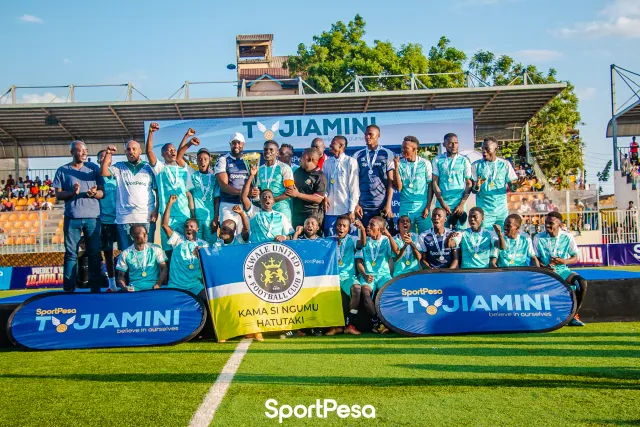
Sponsorships and partnerships help brands grow and connect with their audience. They give companies a chance to support causes while building visibility and trust. When done right, they open new doors for marketing, innovation, and community impact. Choosing the right sponsorship partners helps you get real value for your efforts as a brand.
A sponsorship partner is a brand or individual that gives money, products, or services to help others succeed. The partnership and sponsorship relationship is built on exchange. One side gives support while the other offers exposure. These collaborations can promote events, fund talent, or strengthen communities.
READ: Athlete Brand Partnerships: Sportpesa's Tujiamini Guide 2025
Sponsorship partners give funds or in-kind help to an event, person, or a team in return for visibility. This connection gives both sides the power to grow and reach new audiences. In a sponsorship partnership, the sponsor and partner each benefit in unique ways. The sponsor gains marketing value while the supported group achieves its goals.
Sponsorship is a short-term, goal-based exchange where one side offers support for publicity. A partnership focuses on long-term collaboration and shared vision. The difference between sponsorship and partnership lies in involvement and duration. Partnerships aim for shared growth, while sponsorships mainly drive marketing and brand awareness.
Aspect
Sponsorship
Partnership
Nature of relationship
Transactional
A straightforward exchange of money or in-kind contributions for marketing exposure.
Relational
An in-depth, cooperative effort where both sides work closely to create mutual value.
Duration
Short-term
Often tied to a specific event, program, or campaign.
Long-term
Involves ongoing collaboration and a focus on lasting growth.
Level of involvement
Limited
The sponsor is rarely involved in the daily routines or the sponsee's decisions.
High
Partners are actively involved in planning, strategic decisions, and execution.
Primary focus
Brand visibility
The main objective is to increase the sponsor's brand awareness and recognition.
Shared objectives
The focus is on achieving mutually beneficial business goals. These include a wider market reach or creating new products.
Contribution
The sponsor provides funding, products, or services; the sponsor provides the marketing platform.
Both parties contribute various resources, including capital, expertise, networks, and staff.
Risk and reward
Uneven distribution
The sponsor bears limited financial risk, and rewards are mainly brand-based.
Shared distribution
Both parties share in the risks and rewards of the collaboration.
Motivation
Driven by marketing and public relations goals to generate brand awareness and goodwill.
Driven by strategic goals like sustainable growth, innovation, and gaining a competitive advantage.
READ ALSO : Developing clubs with brand partnerships
A sponsorship has clear value exchange between brand and recipient. It includes specific benefits, target audiences, and time limits. Communication and delivery are key to success. The difference between sponsorship and advertising is that sponsorship creates bonds and exposure.
The main types are financial, in-kind, media, and promotional sponsorships. Financial offers money, while in-kind gives products or services. Media sponsorship provides coverage, and promotional focuses on events or influencers. These help brands connect with people in different ways.
Examples include Coca-Cola supporting the Olympics and Adidas backing the FIFA World Cup. A tech company might fund a museum show, or a drink brand could sponsor a music festival. Brands like SportPesa also fund local sports through programs like Tujiamini. These show how sponsors and partners drive community and global impact.
A partnership includes at least two entities who share profits, risks, and responsibilities. It allows shared ownership and collaboration in decision-making. Partners and sponsors both build trust and contribute to success. Partnerships are easier to start and help businesses grow faster.
Examples include Sportpesa and Tujiamini's partnership to support Kenyan grassroots talents. Coca-Cola and McDonald's work together in supply chain partnerships. Red Bull and GoPro share content to reach wider audiences. These examples show the strength of partnership sponsorship across industries.
Sponsorships boost brand awareness and audience engagement. They create networking opportunities and generate leads. Companies build trust and improve their image through community support. These benefits prove that partnerships and sponsorships help brands grow effectively.
Partnerships share resources, reduce risks, and bring diverse skills together. They encourage innovation, teamwork, and sustainable development. Financial, creative, and strategic strengths combine for greater success. This is how a sponsor and partner create long-lasting value.
READ ALSO : Key benefits of sponsorship: Tujiamini Sports Sponsorship
Choose sponsorships for short-term visibility and specific events. Pick partnerships for long-term growth and shared business goals. Sponsorship vs partnership decisions making depend on your budget, audience, and purpose. Tujiamini supports both strategies to help brands and communities succeed.
Tujiamini’s partnership with SportPesa supports sports and community projects in Kenya. This collaboration provides funding, training, and mentorship to help local talent grow. The partnership sponsorship also connects with groups of people like artists and journalists. It continues to empower athletes, teams, and creatives across the country.
Tujiamini has supported athletes like Tyson Juma, Fridah Ndinda, and Samuel Muturi. Teams such as Megastars FC and Kabras Queens have grown through the program. These stories show how sponsorship partnerships change lives and build hope. The initiative also supports coaches, youth clinics, and community programs for lasting impact.
READ ALSO : Empowering communities through a transformative sports initiative
What is a sponsorship partner?
A sponsorship partner is the one who gives money or services to support a cause. In return, they get more exposure and branding opportunities.
Research, network, and pitch your value clearly to brands that align with your goals.
Brands like SportPesa Tujiamini, Kenya Airways, and Safaricom support sports and events.
Create a strong proposal, and show your impact in the community. Remember to explain how the sponsor will benefit from your project.
Sponsorships and partnerships help people grow and brands connect. They build trust, open doors, and bring real change to communities. Tujiamini proves that having the right sponsorship partners gives real value.
Apply now at Tujiamini.co.ke and have the chance to grow your dreams into reality.